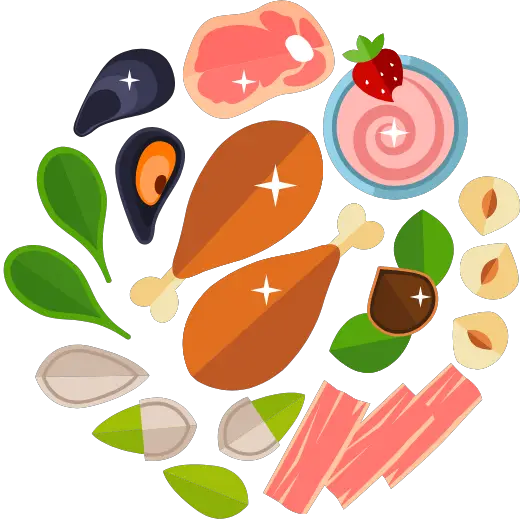In France, dessert is not merely an afterthought; it is an art form, a science, and a cherished cultural institution. This world is known as pâtisserie, a term that encompasses the universe of French pastry, from delicate, jewel-like creations to rustic, comforting tarts. A pâtissier, or pastry chef, is a highly respected artisan, a master of technique, precision, and creativity who transforms simple ingredients like flour, butter, sugar, and eggs into edible works of art.
To step into a French pâtisserie is to enter a gallery where every item on display is a testament to centuries of tradition and innovation. This guide is an invitation to explore this beautiful and delicious world, to understand its foundations, and to appreciate the skill and passion that make French desserts a global benchmark for excellence.
The Foundation: The Mother Pastries and Creams
The vast and dazzling world of French pastry is built upon a foundation of core doughs, batters, and creams. Mastering these fundamental “building blocks” is the first and most crucial step for any aspiring pastry chef. Understanding them is the key for any enthusiast to appreciate the construction of their favorite desserts.
Pâte à Choux (Choux Pastry)
A light, hollow pastry made by cooking flour, butter, and water together before beating in eggs. When baked, the high moisture content creates steam, causing the pastry to puff up dramatically, creating a crisp outer shell and a hollow interior perfect for filling. This is the base for classics like éclairs, profiteroles, and the towering croquembouche.
Pâte Feuilletée (Puff Pastry)
A true test of a pâtissier’s skill. Puff pastry is a laminated dough, created by folding a block of butter into a lean dough and then repeatedly rolling and folding the package. This process, called tourage, creates hundreds of paper-thin, alternating layers of dough and butter. In the heat of the oven, the water in the butter turns to steam, forcing the layers apart and creating an incredibly light, flaky, and airy pastry. It is the foundation for the mille-feuille (“thousand sheets”) and the Palmier.
Pâte Sucrée & Pâte Sablée (Sweet & Shortcrust Pastry)
These are the primary doughs used for tarts (tartes). Pâte sucrée is a crisp, sweet pastry that is sturdy enough to hold moist fillings. Pâte sablée has a higher butter content and a more delicate, sandy, cookie-like texture. They form the base for countless fruit tarts, lemon tarts (tarte au citron), and chocolate tarts.
Crème Pâtissière (Pastry Cream)
A rich, thick custard made from milk, egg yolks, sugar, and flour or cornstarch. It is the classic filling for éclairs, cream puffs, and fruit tarts. It can be flavored with vanilla, chocolate, coffee, or liqueurs.
Crème d’Amande & Frangipane
Crème d’amande is a rich cream made from butter, sugar, eggs, and ground almonds. When it is lightened with a portion of pastry cream, it becomes frangipane. This is the signature filling for the Galette des Rois and is often used as a base layer in fruit tarts.
The Icons: A Tour of Classic French Pâtisserie
With the foundational elements in place, we can explore some of the most iconic and beloved creations of the French pastry world.
The Macaron
Not to be confused with the coconut macaroon, the French macaron is a delicate sandwich cookie made from almond flour, egg whites, and sugar. It is famous for its smooth, crisp shell, its chewy interior (the “foot” or pied), and its luscious filling of ganache, buttercream, or jam. Its vibrant colors and endless flavor combinations make it a jewel of the pâtisserie window.
The Éclair
An oblong pastry made from pâte à choux, filled with flavored pastry cream (typically chocolate or coffee), and topped with a corresponding glaze (fondant). A perfect éclair should be light and crisp, generously filled, and elegantly glazed.
The Mille-Feuille
Meaning “thousand sheets,” this dessert is a masterpiece of texture. It consists of three layers of crisp, caramelized puff pastry alternating with two layers of rich pastry cream. The top is traditionally finished with a marbled icing or a simple dusting of powdered sugar.
The Tarte au Citron Meringuée (Lemon Meringue Tart)
A perfect balance of sweet and tart. A crisp pâte sucrée shell is filled with a zesty, tangy lemon curd and topped with a cloud of either soft Italian meringue or baked French meringue, which is often toasted for color and flavor.
The Paris-Brest
A spectacular creation named in honor of a bicycle race between Paris and Brest. It is a large ring of choux pastry, sliced in half horizontally, filled with a rich praline-flavored cream, and garnished with toasted almonds and powdered sugar. Its wheel shape is a direct nod to its cycling origins.
The Opéra Gâteau
A sophisticated and elegant cake made with thin layers of almond sponge cake (joconde) soaked in coffee syrup, layered with coffee-flavored buttercream and chocolate ganache, and topped with a glossy chocolate glaze. Each layer is distinct yet harmonious.
The Modern Pâtisserie: Tradition Meets Innovation
While deeply rooted in tradition, the world of French pâtisserie is not static. Contemporary pastry chefs are constantly pushing the boundaries of creativity, reinterpreting classic recipes with modern techniques and global flavors.
Today’s top pâtissiers, like Cédric Grolet, famous for his hyper-realistic sculpted fruit desserts, or Pierre Hermé, renowned for his unique flavor combinations like Ispahan (rose, raspberry, and lychee), are global superstars. They honor the foundational techniques of their predecessors while incorporating new textures, lighter creams, and unexpected ingredients.
In conclusion, French pâtisserie is a celebration of precision, artistry, and the pursuit of perfection. It is a tradition that respects its past while boldly innovating for the future. Whether you are enjoying a simple, flaky croissant or a complex, multi-layered gâteau, you are partaking in a cultural heritage that understands the profound joy that can be found in a single, perfect bite. We encourage you to explore your local bakeries or even try a classic recipe at home, to experience firsthand the magic and discipline of this sweet art form.
